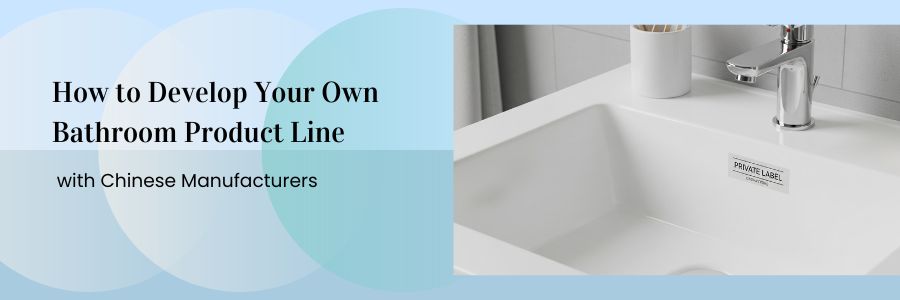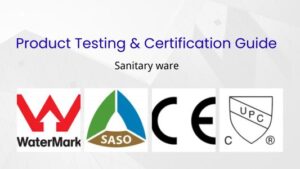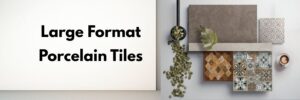Why Creating Your Own Bathroom Product Line Makes Business Sense
After years of importing standard bathroom products from China, I noticed something important: the distributors and retailers who were most successful had their own branded product lines. Instead of competing solely on price with identical products, they were building brand equity and commanding premium prices.
Creating your own bathroom product line might sound intimidating, but it’s more accessible than ever thanks to Chinese manufacturers’ increasing flexibility and design capabilities. Whether you want to create a completely new product or simply put your brand on existing designs with modifications, there’s a solution that fits your business model.
In this guide, I’ll walk you through the entire process of developing your own bathroom product line with Chinese manufacturing partners, from initial concept to market launch.
If you’ve already read my Ultimate Guide to Chinese Sanitary Ware Brands for Importers and Price vs. Quality: Understanding the Different Tiers of Chinese Bathroom Products, you have a good foundation for understanding the Chinese sanitary ware landscape. Now let’s explore how to create products uniquely yours.
What Are Your Options for Creating a Bathroom Product Line?
There are several approaches to developing your own bathroom product line, each with different levels of investment, control, and uniqueness:
1. Private Labeling (Easiest Entry Point)
What It Is: Putting your brand name and packaging on existing products with minimal modifications.
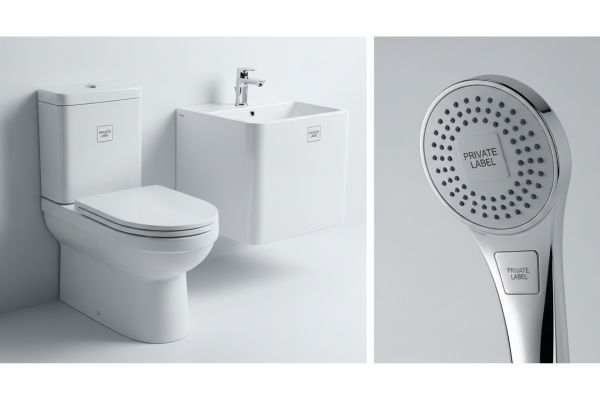

Best For:
- Businesses new to product development
- Companies with limited capital
- Testing market response before deeper investment
- Quick market entry with less money as possible
Typical Process:
- Select products from manufacturer’s existing catalog
- Add your branding to the product
- Customize packaging with your brand
- Potentially make minor color or finish changes
Investment Required:
- Low to moderate ($3,000-$30,000 for initial order)
- Typically 100-300 unit minimum orders
Timeframe:
- 30-60 days from agreement to delivery
Chinese Manufacturer Options:
- Most small or mid-tier manufacturers offer private labeling
- Look for suppliers who already serve export markets
- OEM-friendly factories with English-speaking staff
2. ODM (Original Design Manufacturer) Customization
What It Is: Modifying existing designs with significant customizations that make products distinctly yours.
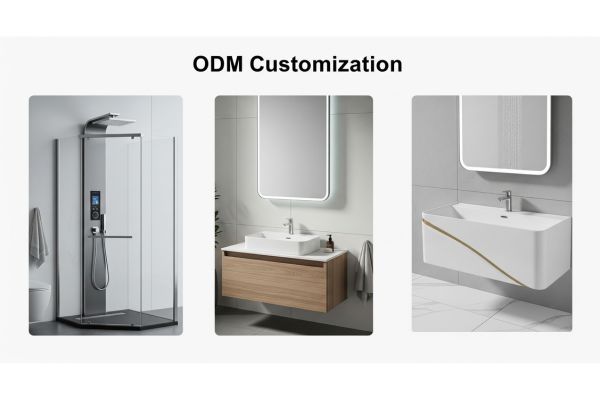

Best For:
- Established importers or retailers
- Companies with clear market positioning
- Businesses wanting differentiation without full development costs
- Balancing uniqueness with manageable investment
Typical Process:
- Start with manufacturer’s base design
- Customize significant features (style, functionality, materials)
- Develop custom finishes or technologies
- Create branded components and packaging
Investment Required:
- Moderate ($15,000-$50,000 for initial development and order)
- Typically 300-500 unit minimum orders
Timeframe:
- 60-120 days from concept to delivery
Chinese Manufacturer Options:
- Mid to upper-tier manufacturers with design teams
- Manufacturers with strong R&D capabilities
- Factories with experience in modification projects
3. OEM (Original Equipment Manufacturer) Custom Development
What It Is: Creating completely unique products designed to your specifications.


Best For:
- Established brands seeking full differentiation
- Companies with proprietary designs or technologies
- Businesses targeting premium market segments
- Long-term brand building strategies
Typical Process:
- Develop your own design concept (often with designers)
- Create detailed technical specifications
- Work with manufacturer to develop prototypes
- Test and refine through multiple iterations
- Establish full production run
Investment Required:
- High ($50,000-$200,000+ for development and initial order)
- Typically 500-1000+ unit minimum orders
Timeframe:
- 4-12+ months from concept to delivery
Chinese Manufacturer Options:
- Top-tier manufacturers with strong R&D departments
- Factories with advanced engineering capabilities
- Manufacturers experienced in working with international brands
The approach you choose should align with your business goals, budget, and timeline. Many successful importers start with private labeling, then gradually move toward more customized products as their brand grows.
For those considering commercial applications, reference my article on Commercial vs. Residential Sanitary Ware for specific considerations in those markets.
How to Plan Your Bathroom Product Line Development
Before contacting manufacturers, you need a clear plan. Here’s a step-by-step approach:
1. Define Your Market Position and Brand Identity
Start by answering these fundamental questions:
- Who is your target customer? (Budget-conscious homeowners? Luxury condo developers? Commercial contractors?)
- What price tier will you occupy? (Entry-level, mid-range, premium, luxury?)
- What will differentiate your products? (Design, technology, sustainability, price?)
- What aesthetic will define your brand? (Modern, traditional, minimalist, artistic?)
- What values will your brand represent? (Innovation, reliability, sustainability, luxury?)
Document these answers in a clear brand brief that will guide all product development decisions.
2. Research Market Gaps and Opportunities
Successful product lines address unfilled market needs:
- Study competitor offerings and identify gaps
- Review customer complaints about existing products
- Identify emerging design or technology trends
- Consider regional preferences in your market
- Look for opportunities to solve common problems
My experience has shown that the most successful bathroom product lines solve specific problems or bring meaningful innovation, not just price or aesthetic differences.
3. Develop Your Product Specifications
Create detailed specifications for each product, including:
For Toilets:
- Design style and dimensions
- Flush technology and water usage
- Trap design and waste outlet type
- Seat features and mounting system
- Special features (rimless design, easy-clean surface, etc.)
- Material and glaze specifications
- Color and finish options
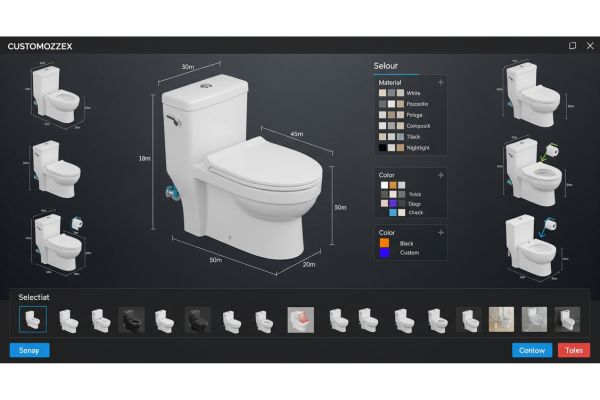

For Bathroom Sinks:
- Shape, size, and mounting type
- Overflow design and drain compatibility
- Material and finish specifications
- Faucet hole configuration
- Special features (integrated soap dish, custom drain, etc.)
- Wall clearance requirements
- Color and finish options
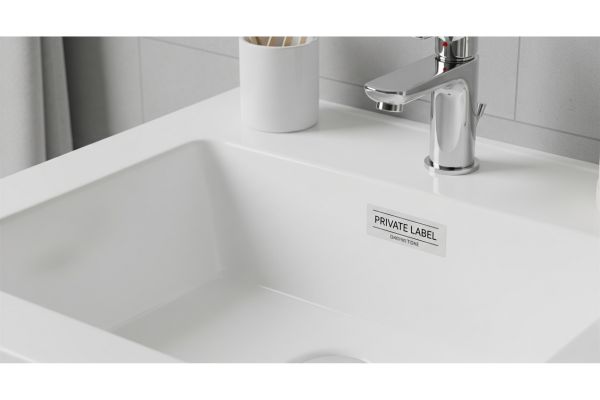

For Faucets:
- Style and design details
- Mounting type and configuration
- Flow rate and water efficiency features
- Valve and cartridge specifications
- Finish options and plating requirements
- Handle design and operation
- Special features (touch operation, LED lighting, etc.)
The more detailed your specifications, the smoother the development process will be. Include reference images whenever possible.
4. Set Realistic Budget and Timeline
Develop a comprehensive budget that includes:
- Product development costs (design, prototyping, testing)
- Tooling and mold costs
- Certification and testing fees
- Initial inventory investment
- Shipping and logistics
- Marketing and packaging development
- Buffer for unexpected costs (typically 15-20%)
For timeline planning, consider:
- Development phase: 1-6 months
- Prototyping: 1-3 months
- Testing and refinement: 1-2 months
- Initial production: 1-3 months
- Shipping and logistics: 1-2 months
- Total timeline: 6-18 months depending on complexity
Always add buffer time for unexpected delays, especially for your first product development project.
How to Find and Select the Right Manufacturing Partner
Finding the right Chinese manufacturer is critical to your product line’s success. Here’s my proven approach:
1. Identify Potential Manufacturing Partners
Start with a broad search using these methods:
- Trade Shows: Canton Fair, Kitchen & Bath China (Shanghai), CIKB
- Online Platforms: Alibaba, Made-in-China, Global Sources
- Industry Referrals: Network with other importers
- Sourcing Agents: Specialized bathroom product agents
- Direct Research: Identify manufacturers from my Top 10 Sanitary Ware Manufacturers guide
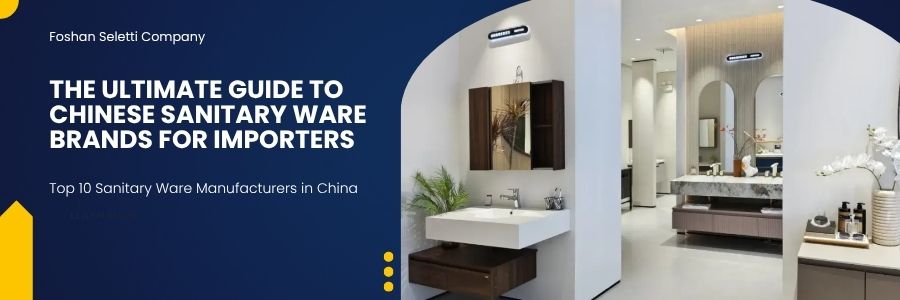

Create an initial list of 10-15 potential partners that appear to have the capabilities you need.
2. Evaluate Manufacturing Capabilities
Narrow your list by assessing each manufacturer’s relevant capabilities:
- Production Range: Do they make all the products you need?
- Quality Tier: Do they produce at your target quality level?
- Design Capabilities: Do they have in-house design teams?
- R&D Facilities: Do they have prototyping and testing capabilities?
- Customization Experience: Have they done similar projects?
- MOQ Flexibility: Are their minimum orders manageable for you?
- Certifications: Do they have relevant certifications for your market?
Request detailed company profiles, capability brochures, and examples of previous custom projects.
3. Evaluate Communication and Compatibility
Effective communication is essential for successful product development:
- Test response time and clarity in initial communications
- Assess English proficiency of key contacts
- Evaluate willingness to answer detailed questions
- Check time zone compatibility and working hours
- Request video calls to establish personal connection
- Assess cultural compatibility and working style
Eliminate partners with poor communication, even if their technical capabilities seem strong.
4. Verify Credibility and Stability
Before committing to development, verify the manufacturer’s credibility:
- Request business license and registration documentation
- Verify years in business and company size
- Check credit reports if available
- Verify claimed certifications independently
- Consider a factory audit through a third party if necessary
For detailed verification strategies, see my article on How To Find A Reliable Sanitary Ware Supplier In China.
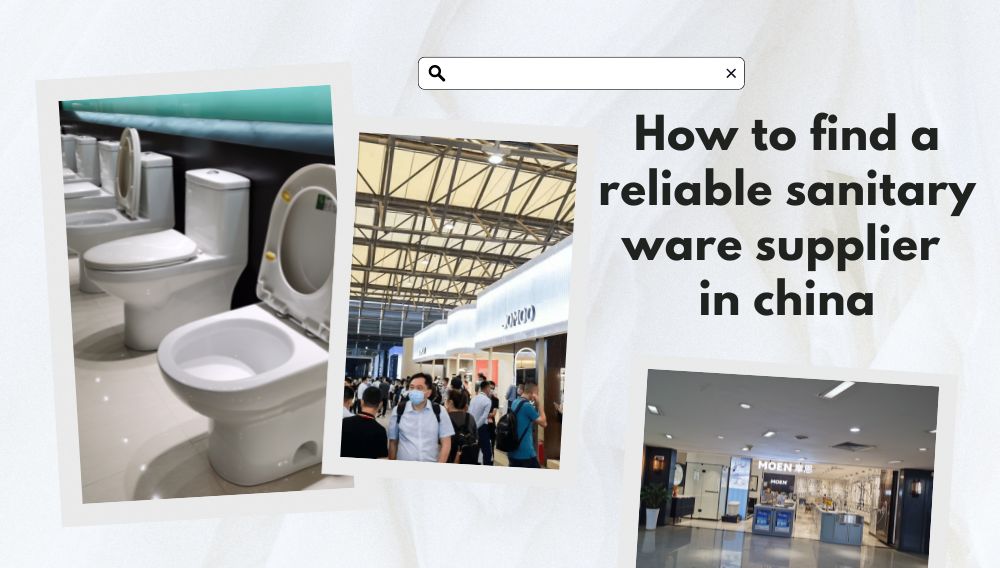

5. Request and Evaluate Samples
Always evaluate actual product samples before proceeding:
- Request samples of products similar to your planned line
- Assess material quality and craftsmanship
- Test functionality and performance
- Check finishing and detail work
- Compare samples from multiple manufacturers
- Have samples tested by independent labs if necessary
Pay particular attention to consistency between samples if you request multiples.
The Step-by-Step Product Development Process
Once you’ve selected a manufacturing partner, here’s the typical development process:
1. Initial Design Development (1-2 Months)
The process typically begins with design development:
- Share your design brief and specifications
- Provide reference images and competitor examples
- Discuss technical requirements and constraints
- Review manufacturer’s initial design concepts
- Provide feedback on preliminary designs
- Agree on design direction and technical specifications
- Finalize 2D drawings or 3D renderings
Pro Tip: Use visual references extensively. Create mood boards, collect competitor product images, and use detailed annotations on drawings to communicate your vision clearly.
2. Prototyping Phase (1-3 Months)
The prototyping phase turns concepts into physical products:
- Review and approve detailed technical drawings
- Discuss material selections and finishing processes
- Approve mold or tooling development
- Wait for initial prototype production
- Receive and evaluate first physical prototype
- Provide detailed feedback on improvements
- Review multiple prototype iterations as needed
- Approve final prototype design
Pro Tip: Budget for 2-3 prototype iterations. The first prototype rarely meets all expectations, and refinement is a normal part of the process.
3. Testing and Certification (1-2 Months)
Before moving to production, verify performance and compliance:
- Conduct performance testing (functionality, durability)
- Test water efficiency and flow rates
- Verify dimensional accuracy and compatibility
- Conduct material safety testing
- Initiate certification processes required for your market
- Resolve any issues identified during testing
- Make final design adjustments based on test results
Pro Tip: Research certification requirements for your target market before starting development. Include certification costs and timelines in your planning.
4. Production Setup (1-2 Months)
Preparing for production involves several critical steps:
- Finalize all technical specifications
- Approve final production molds and tooling
- Establish quality control standards and processes
- Create detailed inspection criteria
- Develop packaging design and materials
- Approve production samples from actual production setup
- Address any production-specific adjustments
Pro Tip: Create a detailed quality control checklist with clear accept/reject criteria for each aspect of your product.
5. Initial Production Run (1-2 Months)
The first production run requires careful monitoring:
- Start with a smaller initial order when possible
- Request regular production updates with photos
- Consider third-party quality inspection during production
- Approve pre-production samples from actual materials
- Request in-line quality checks during production
- Arrange final pre-shipment inspection
- Address any issues before shipment authorization
Pro Tip: If budget allows, visit the factory during initial production or hire a third-party inspector to be your eyes on the ground.
For detailed quality control guidance, review my Quality Control Guide for Ceramic Bathroom Sanitary Ware.
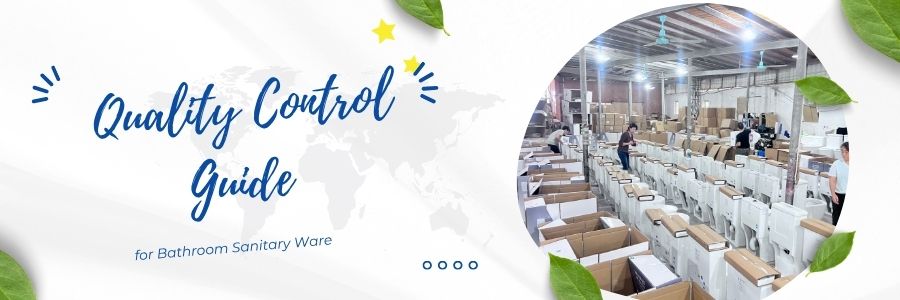

Managing Costs in Custom Product Development
Custom product development involves various costs. Here’s how to manage them effectively:
1. Understanding the Cost Components
Be prepared for these typical expenses:
One-Time Costs:
- Design and engineering fees
- Mold and tooling development
- Prototype production and revisions
- Testing and certification
- Packaging design and plate fees
Ongoing Costs:
- Per-unit production costs
- Packaging materials
- Quality control and inspection
- Shipping and logistics
- Import duties and taxes
2. Strategies to Manage Development Costs
Use these approaches to optimize your investment:
- Start with modifications to existing designs rather than completely custom products
- Develop a flagship product first, then expand the line
- Share tooling costs for similar products or variations
- Negotiate gradual payment of tooling costs across multiple orders
- Consider progressive development, adding product categories over time
- Focus on high-margin products for initial development
- Leverage manufacturer’s design capabilities rather than external designers
- Bundle development of multiple products for better negotiating leverage
3. Balancing Cost, Quality, and Minimum Order Quantities
Finding the right balance is critical:
- Higher quality typically means higher MOQs
- Negotiate MOQs by product rather than for the entire line
- Consider starting with essential products and expanding gradually
- Explore staged delivery options to manage inventory investment
- Evaluate total landed cost, not just factory price
- Focus on value engineering rather than simply cost-cutting
Cost Management Case Study: A client wanted to develop a complete bathroom line but had limited initial capital. We created a phased approach:
- Phase 1: Private-labeled bathroom sinks with custom finishes and color (minimal costs)
- Phase 2: Semi-custom sinks with dedicated packaging (moderate tooling costs)
- Phase 3: Fully custom toilets with proprietary features (significant tooling investment)
This approach allowed them to build revenue from initial products to fund later development phases.
Protecting Your Intellectual Property
Protecting your product designs is essential when developing custom products:
1. Understanding IP Protection Options
Several mechanisms can help protect your designs:
- Non-Disclosure Agreements (NDAs) before sharing designs
- Design Patents for unique aesthetic elements
- Utility Patents for innovative functional features
- Trademark Registration for your brand name and logo
- Copyright Protection for packaging and marketing materials
2. Practical Protection Strategies
Beyond legal protections, consider these practical approaches:
- Work with manufacturers with established reputations
- Split production of components among different factories when possible
- Control your supply chain for proprietary components
- Maintain ownership of molds and tooling (include in contracts)
- Develop exclusive relationships with key suppliers
- Build long-term partnerships based on mutual benefit
- Regularly monitor markets for copycat products
3. Realistic Expectations About IP in China
Be realistic about protection limitations:
- Some degree of copying is difficult to prevent entirely
- Focus protection on your most innovative features
- Stay ahead through continuous innovation
- Build strong brand identity beyond physical products
- Balance protection costs against business impact
- Understand legal recourse is complicated and expensive
Marketing Your Custom Bathroom Product Line
Creating your products is only half the battle. Here’s how to successfully market your line:
1. Developing a Strong Brand Identity
Your brand should communicate clear value:
- Develop consistent brand messaging across all products
- Create a compelling brand story and mission
- Establish a distinctive visual identity and packaging
- Articulate clear unique selling propositions
- Define your brand voice and communication style
2. Creating Effective Marketing Materials
Invest in high-quality marketing collateral:
- Professional product photography from multiple angles
- Detailed product specifications and feature lists
- Installation guides and user manuals
- Digital 3D renderings for marketing before stock arrival
- Video demonstrations of key features
- Comparative information showing advantages
- Case studies and installation examples
3. Building Distribution Channels
Plan your go-to-market strategy:
- Determine direct vs. wholesale distribution approach
- Develop pricing strategy for each channel
- Create dealer or distributor programs if applicable
- Establish online presence (dedicated website, e-commerce)
- Consider exclusivity arrangements with key partners
- Develop merchandising solutions for retail display
4. Launching Your Product Line
Plan a coordinated product launch:
- Create teaser campaigns before full availability
- Offer pre-order incentives to gauge demand
- Host launch events (virtual or physical)
- Develop trade show presentation strategy
- Create introductory offers and promotions
- Reach out to industry media for coverage
- Leverage social media for organic reach
Frequently Asked Questions
Q 1: How much should I budget for developing my own bathroom product line?
For a complete bathroom suite (toilet, sink, and faucet) with moderate customization, budget $50,000-$100,000 for development costs and initial inventory. Fully custom lines with proprietary technology can exceed $200,000. Start small with one product category if budget is limited.
Q 2: What’s the minimum order quantity I should expect?
MOQs vary significantly by product type and customization level. For private-labeled products, expect MOQs of 100-300 units per model. Semi-custom products typically require 300-500 units per model. Fully custom products often start at 500-1,000 units minimum. Many manufacturers are becoming more flexible with MOQs for long-term partnerships with phased order commitments.
Q 3: How can I verify that my manufacturer won’t sell my designs to others?
While there’s no foolproof method, several approaches can reduce risk. Start with a detailed contract including non-compete and exclusivity clauses. Maintain ownership of all molds and tooling (stated in contracts). Develop relationships with factory owners, not just sales staff. Consider working with manufacturers that produce for established brands, as they typically have better confidentiality practices. Finally, maintain regular market monitoring for potential copies, in meanwhile, you can also visit the factory production line to see if there are products similar to your mold.
Q 4: How long does the entire development process typically take?
From initial concept to products in your warehouse, expect 4-8 months for moderately custom products and 9 -18 months for fully custom lines with new technology. Private labeling existing designs can be much faster (2-4 months). The most time-consuming phases are typically the initial design approval and the tooling/mold development. Build buffer time into your planning, especially for your first development project.
Q 5: Should I develop everything at once or phase my product line?
A phased approach is typically more manageable and less risky, especially for first-time developers. Start with products that have lower development costs and higher margins. Use revenue and market feedback from initial products to fund and refine subsequent categories. This approach also allows you to build manufacturer relationships with smaller initial commitments.
Q 6: How do I ensure my products meet quality standards for my market?
Start by clearly defining your quality expectations and target market certification requirements. Create detailed product specifications and quality control checklists. Request multiple samples during development and test them thoroughly. For production runs, implement both in-line quality checks and pre-shipment inspections. Consider third-party inspection services for objectivity. Finally, build quality requirements into your contracts with clear remediation protocols for issues.
Conclusion
Developing your own bathroom product line with Chinese manufacturers is a significant undertaking, but the potential rewards are substantial. A successful private brand allows you to:
- Build equity in your own brand rather than someone else’s
- Command premium pricing through differentiation
- Control your product destiny rather than competing on price
- Create customer loyalty through consistent quality and design
- Establish barriers to entry against competitors
The key to success lies in thorough planning, finding the right manufacturing partner, managing the development process effectively, and creating a compelling market presence for your brand.
I’ve helped dozens of companies develop their own bathroom product lines, from simple private labeling projects to sophisticated custom developments.
Start with a realistic assessment of your resources and capabilities, then take the first step—whether that’s private labeling existing products or embarking on full custom development. Either way, creating your own product line is one of the most powerful ways to elevate your business from commodity selling to brand building.
Have questions about developing your own bathroom product line? Drop a comment below or contact me directly. I’m always happy to help fellow entrepreneurs on this journey.

